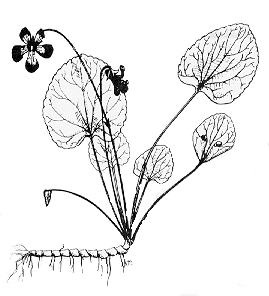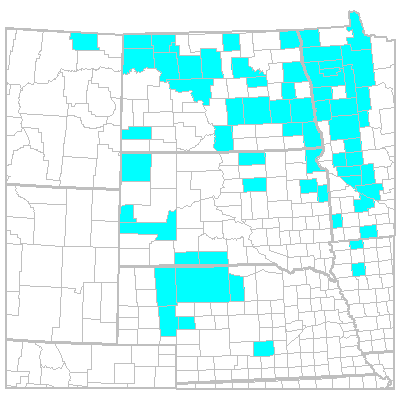
Viola nephrophylla

![]()
Viola nephrophylla Greene -- Bog violet
Low, acaulescent perennial from short rhizomes. Leaf blades ovate-cordate to reniform, 1-4 cm long, 1.5-4(7.5) cm wide, obtuse to broadly rounded, crenate-serrate; petioles slender, 2-16 cm long. Flowers borne singly, nodding on slender peduncles, these about equal to or exceeding the petioles. Flowers violet, irregular, 12-24 mm long including the saccate spur; sepals 5, 1/3 to 1/2 the length of the corolla; petals 5, bearded toward the base on the inside, or the upper pair not bearded, the lowest petal saccate-spurred; stamens 5, the anthers connivent around the ovary, filaments short and broad, extending beyond the anthers; pistil 3-carpellary, style 1, ovary superior, 1-celled. Fertile cleistogamous flowers often produced after the normal ones on short, prostrate to erect peduncles. Fruit a many-seeded, 3-valved, ellipsoid capsule 5-10 mm long. Late May--Jun; sometimes flowering again late Aug--Sep. Wet meadows, fens, springs, ditches and stream banks; frequent in the e and c parts, less common w; (e Que. to B.C., s to CT, NY, WI, ne TX, NM and WA).
The similar V. practincola Greene (often named as V. papilionacea Pursh or V. missouriensis Greene) sometimes occurs in moist habitats and may be confused with V. nephrophylla. It differs from the latter in having only the lateral 2 petals bearded on the inner surface, the spurred petal glabrous inside. Its leaves are variable enough to sometimes fit V. nephrophylla, but they tend more to be acute or acuminate at the apex.
 Viola nephrophylla |

|